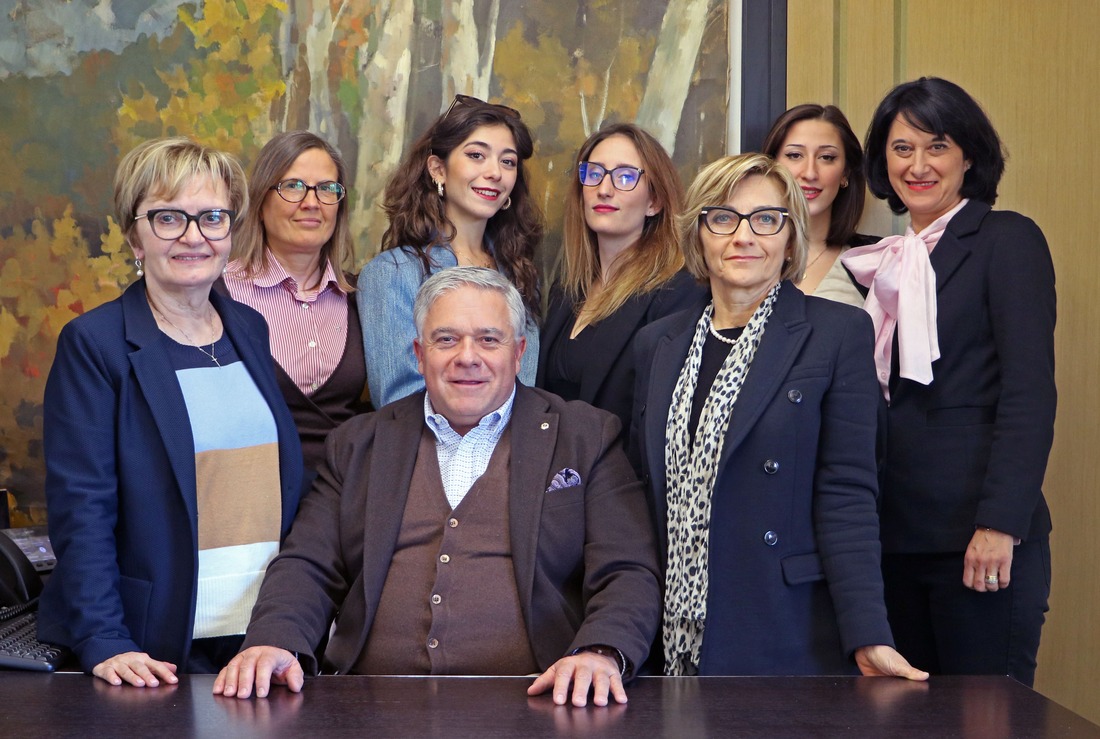By Catia Giorni
“Every project is a story: it is essential to read the client’s footprint and direct them towards the best choices”
Arch. Federico Romolini
Born from a family tradition that has lasted for over sixty years, the studio of Architect Federico Romolini intertwines the history of Sansepolcro with that of local architecture. Restoring, designing, accompanying customers in their choices: for Romolini, every intervention is a story to be interpreted. In the interview that follows, he opens the doors of his studio, between memory, modernity and passion for ‘designed’ beauty.
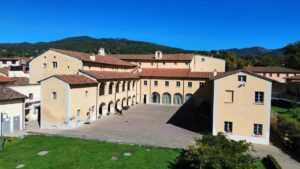
Valley Life: Architect Romolini, can you tell us something about the history of the studio?
Federico Romolini: “Our Technical Studio has more than 65 years of history. We are in the second generation: my father was the one who founded it and was its soul until a few years ago; Today there is me and soon the third generation will also arrive, who are completing their architectural studies.
Over time we have been involved in the design of new buildings, both residential and industrial and commercial, but our main expertise and specialization have always been the recovery of existing buildings as well as the architectural restoration of monumental structures. Among the most significant works we remember the recovery of about seventy churches, after the earthquake of 1997-2001 that struck the Tuscan Tiber Valley and the Casentino, the works carried out on the occasion of the Jubilee of 2000 with the design of shelters for pilgrims at the Sanctuary of the Carmine in Anghiari, in Montecasale ai Servi di Sansepolcro – and finally at the Hermitage of the Casella in Caprese Michelangelo. No less important are some restorations of historical and religious buildings such as the Aboca Museum, the Palazzo Luca Pacioli Historical Residence and the Cathedral of Sansepolcro. We have also taken care of the seismic improvement and consolidation of the walls of Monterchi”.
Valley Life: What is the philosophy behind your projects?
Federico Romolini: “At the base of our work there is a direct and personal relationship that we establish. We often collaborate with private clients, creating relationships that over time become real friendships. It often happens that we continue the working relationship with subsequent generations by serving children and grandchildren. This bond of trust has allowed us to build a precious archive, which tells a fragment of the history of Sansepolcro and the entire Tiber Valley: a heritage that is also useful for understanding the economic and urban evolution of the territory”.
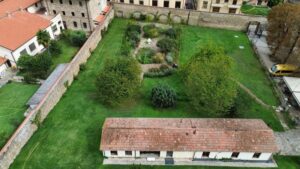
Valley Life: What types of interventions do you carry out in addition to restoration?
Federico Romolini: “In addition to restoration, we have been involved in the design of industrial, commercial and office buildings: warehouses for local artisans, supermarkets, production and office spaces. In recent years we have increasingly embraced the “turnkey” approach, accompanying those who rely on us from the design to the choice of materials, furnishings and construction details. This type of path requires mastery of digital tools to make photos, insertions and realistic renderings of the developed project; But above all, what matters is to be a close-knit team, capable of translating an idea into reality with consistency and sensitivity”.
Valley Life: Tell us about the studio today: size, organization and tools.
Federico Romolini: “Today we are a dynamic firm, made up of five collaborators plus the two partners: my sister Maria Chiara and I. We have figures dedicated to architectural surveys, design, cadastral practices, real estate divisions and evaluations, successions, the creation of renderings, the choice of the various finishes and the presentation of projects to public bodies and private clients.
In recent years, digital competence has become essential: it is necessary to know the software, but also to be able to advise users in a path of informed choices since everyone, today, is more informed and interested in deepening every technical, functional and aesthetic aspect”.
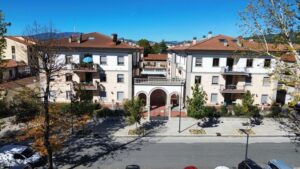
Valley Life: What recent projects have given you the most satisfaction?
Federico Romolini: “Among the most significant projects there is certainly the San Lorenzo Assisted Health Residence in Sansepolcro and the restoration of the former Convent of Santa Marta in Porta Romana, intended for the “after us” project. They were long and complex paths, having to intervene in monumental buildings, bound by the Ministry of Culture, in constant collaboration with the Superintendency. The result today is appreciated by both guests, staff and the entire community.
Another project that has particularly gratified us has been the creation of the Sensory Garden for people with Alzheimer’s and autistic subjects: an intervention that combines professional value and human sensitivity”.
Valley Life: Have you also worked outside the Sansepolcro area?
Federico Romolini: “Yes, we have also worked a lot in the neighbouring municipalities, in particular for the farms and livestock farms present in the entire Tiber Valley. We have been involved in the restoration of buildings in the Diocese of Arezzo Cortona Sansepolcro, farmhouses and holiday homes, such as that of the ‘Zenzano’ and the Madonna della Selva in Caprese Michelangelo, as well as the recovery of historic buildings owned by ecclesiastical and private bodies.
Among the most cherished projects I remember the Anghiari lift, born from my degree thesis: today seeing it built is a great personal satisfaction.
We have also participated in calls for proposals that have financed interventions supported by the Italian Bishops’ Conference and the Ministry of Culture.
Although we work mainly with private individuals, we have also carried out public interventions, including the design of the fire-fighting systems of the Pinacoteca di Siena and other buildings of the Polo Museale della Toscana. These are experiences that require high specialization and constant dialogue with the institutions”.
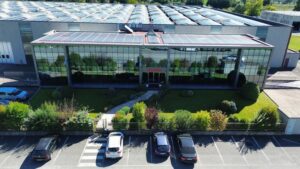
Valley Life: What role does residential construction play for the studio?
Federico Romolini: “Residential construction has always been an important part of our work. From the 70s to today, the approach has changed: if once a lot was built, today there is more focus on quality, sustainability and recovery of the existing.
In the 60s and 70s we built the residential centre in Fragaiolo in the Municipality of Caprese Michelangelo with over 50 villas among the centuries-old chestnut groves, while in the 80s and 90s we designed several residential subdivisions in Sansepolcro, including the Residence “La Piazzetta” in Viale Vittorio Veneto redeveloping a former industrial area where there was a tile factory.
We are still designing new houses, right now we are working on a rural house in the hills near Sansepolcro, with a traditional language with stone walls and wooden floors, while villas will soon be built in demand by clients who prefer modern architectural languages”.
Valley Life: Tell us a little about yourself: training and personal interests.
Federico Romolini: “My training is technical. After graduating as a surveyor, I graduated in Architecture in Florence in 1996. I attended a series of refresher courses, on bio-architecture, on the restoration of Italian historic gardens, on the restoration of architectural heritage and on Civil Protection at the National Department in Rome.
I have been part of several municipal building commissions, which have allowed me to get to know the area in depth, both from a regulatory and design point of view.
Outside the studio I cultivate passions that speak of identity and belonging: I am a long-time crossbowman, and I participate in the life of local associations, such as the Lions Club, always trying to give something back to my community”.
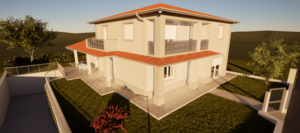
For Studio Romolini, each project bears its own unique identity: it bears the imprint of the client and requires a dedicated approach: “Our task is to listen, guide and interpret the wills and desires, translating them into technical and architectural solutions capable of combining functionality, beauty and respect for the context. We continue to work with the same passion as always, attentive to the territory, restoration and quality of living, ready to face the new challenges that each project poses to us”, he concludes.
Info: Studio Tecnico Romolini, Via del Prucino 57, Sansepolcro (Ar) / Tel. 0575 742762 / studiotecnicoromolini@gmail.com
